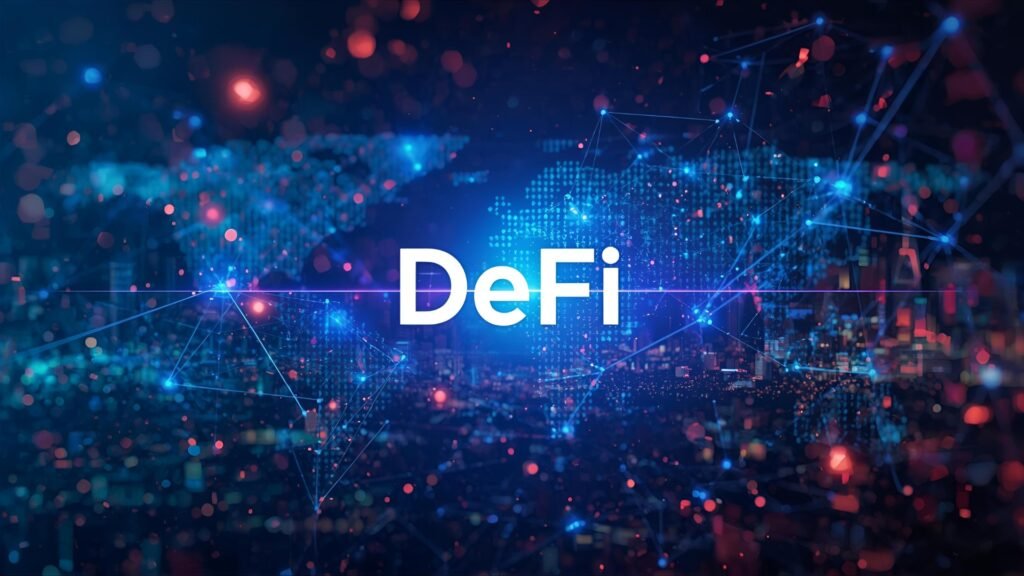DeFi has entered a new phase where specialized yield trading meets high-throughput, stablecoin-native infrastructure. That’s the promise behind the headline: Pendle and Plasma are teaming up to expand global DeFi, blending Pendle’s tokenized yield markets with Plasma’s near-instant, fee-free payments and stablecoin rails. In practical terms, this partnership aims to make sophisticated yield strategies as easy to access as checking a balance.
, While letting fintechs, institutions, and everyday users move money at internet speed. Early signals already point in this direction: Plasma’s rapid ecosystem rollout has highlighted integrations across major DeFi protocols, with Pendle PT markets and capital-markets primitives publicly flagged as “coming soon” in the network’s early weeks.
Why This Partnership Matters Now
The last DeFi cycle proved that yield tokenization isn’t a curiosity—it’s a core building block. Pendle popularized on-chain fixed-income-like markets by splitting yield-bearing assets into principal tokens (PTs) and yield tokens (YTs) so users can lock in fixed returns or speculate on future yield in a permissionless, transparent way. As the protocol’s total value locked surged through 2024–2025, it became a top-tier venue for stables, LSTs, and LRTs, drawing both retail and institutional attention. The next logical step is distribution: getting these markets in front of more users with rails that are fast, cheap, and easy to integrate. That is where Plasma steps in.
Plasma positions itself as stablecoin infrastructure for a new global financial system, purpose-built to support fee-free payments and near-instant settlement. It launched its mainnet beta with a deep focus on stablecoin liquidity and integrations across blue-chip DeFi protocols such as Aave, Curve, Balancer, and Fluid—with Pendle and Plasma as a forthcoming addition to the stack. For users, that translates to a smoother path from deposit to yield strategy, and for integrators, a plug-and-play path to embed fixed and variable yield exposures into apps, wallets, and neobanks.
The Building Blocks: How Pendle Works
At the heart of Pendle is a simple but powerful idea borrowed from traditional fixed income: separate the time value of money from the principal. Pendle wraps yield-bearing assets, then splits them into PT (principal, which converges to face value at maturity) and YT (the right to the future yield until maturity). Traders who want fixed yield buy PT and hold; those who want to express views on variable yields buy or sell YT, taking leveraged exposure to changes in underlying rates. Market makers, risk desks, and savvy individuals can compose strategies around cash-and-carry, covered yield, or basis trading across maturities. The result is an increasingly deep, on-chain yield curve—transparent, composable, and live 24/7.
With the partnership, Pendle and Plasma can be offered to Plasma users and integrators as a first-class primitive. Where a traditional neobank might show a savings APY, a Plasma-connected fintech could surface tokenized fixed-yield vaults, yield swaps, or laddered maturities—all powered by Pendle’s mechanics but presented with the simplicity of a banking app. This has the potential to bring fixed-income-style DeFi to entirely new demographics.
The Rails What Plasma Brings to the Table

Plasma is designed for one thing: to make stablecoin money move better. By focusing on low friction, fast finality, and fee-free transfers at the base experience, Plasma lowers one of the biggest barriers to onboarding mainstream users into DeFi: cost and complexity. On day one of its mainnet beta, Plasma highlighted integrations that matter for stablecoin capital formation—Aave markets with close to $1B in capacity, USDe and sUSDe deposits earning points, and “Liquid Leverage” loops that can help bootstrap liquidity. The early ecosystem comms and independent write-ups consistently mention Pendle markets launching next, suggesting that tokenized yield is a near-term pillar of the chain’s roadmap.
Put simply: Plasma is laying the payment and liquidity rails, and Pendle and Plasma the capital markets layer on top. Users will be able to move, park, and price money in one unified flow—send stablecoins cheaply, route deposits through lending markets, then deploy into fixed or variable yield via Pendle PT/YT markets without hopping across chains or paying prohibitive fees.
Expanding Access: From Retail to Institutions
One of the most significant aspects of this tie-up is how it can support both consumer fintech and institutional flows. Plasma’s messaging explicitly targets fintechs and institutions, promising co-incentives to bring billions of new users on-chain. Meanwhile, the Pendle and Plasma has been steadily pushing toward institution-friendly features—like KYC-compliant environments and structured access—that allow funds, treasuries, and corporates to participate in yield markets without compromising on compliance. Combining these thrusts could create a seamless path for embedded DeFi in mainstream apps as well as programmatic treasury deployments for enterprises.
For retail, the benefits are tangible: if a user can onboard stablecoins with negligible fees and tap fixed-yield products that rival or beat savings rates—while maintaining self-custody and transparency—that’s a compelling value proposition. For institutions, the attraction lies in liquidity depth, transparent on-chain settlement, and the ability to hedge duration and rate exposure via YT/PT composition across maturities.
What the Early Rollout Looks Like
Signals from ecosystem posts and third-party coverage suggest a phased rollout. Plasma’s initial DeFi wave featured USDe and sUSDe as core dollar assets, Aave for secured lending and leverage, and Curve/Balancer/Fluid for liquidity routing. The next step frequently mentioned is Pendle PT markets, which would extend the stack from simple deposit and leverage to programmable yield and rate strategies. Separately, media and newsletters covering Plasma’s launch noted ambitions to stand up a “capital markets layer” with Pendle, making tokenized yield opportunities readily available to integrators.
Some outlets have even reported interim milestones like “five new high-yield DeFi markets” as part of Pendle’s expansion into Plasma’s digital banking network. While the precise market list and go-live timing can change as teams execute, the direction of travel is unmistakable: Plasma is building distribution and payments, while Pendle supplies the yield engines that convert deposits into structured outcomes.
The Product Experience: What Users Will Actually Do
From a user-journey perspective, consider this flow. A user holds USDT or USDe in a wallet connected to Plasma. They can transfer funds with negligible friction, supply to an Aave market to earn a base yield or secure leverage, then click into Pendle PT markets to lock a fixed rate until a chosen maturity date—or pick up YT to speculate that yield will rise. The interface can abstract complexity: instead of “buy PT at 98.5 for 1.5% implied APR,” a retail dashboard might say “Earn fixed 6.2% until March 2026,” with a nested disclosure explaining PT/YT mechanics. The same dashboard might show historical yields, basis spreads, and carry so users understand their optionality.
For power users, Plasma’s throughput and Pendle and Plasma may enable delta-neutral carry, rate curve trades, or looped collateral strategies that pair fixed yield on one leg with variable borrowing on another. For institutions, API-first rails can facilitate programmatic rebalancing and laddered maturities across different stablecoin underlyings.
Risk, Security, and What to Watch
No DeFi product is risk-free. Smart-contract risk, oracle behavior under stress, liquidity gaps at maturity, and cross-protocol dependencies all matter. It’s also true that activity surges can attract adversarial behavior. Recently, there were reports of anomalous PT/YT minting activity being investigated by the community press. The Pendle team and broader ecosystem typically communicate status updates in these scenarios; users should monitor official channels and third-party reporting, particularly around the time new integrations go live. The best practice remains the same: assess protocol risk, counterparty exposure, and liquidity at your chosen maturity before sizing positions.
On Plasma, the primary considerations include bridge and custody routes, stablecoin issuer mechanics, and how fee-free UX is financed and safeguarded at scale. That said, the early partner lineup—Aave, Curve, Balancer, Ethena—reflects a bias toward proven primitives, and public notes point to large deposit capacity at launch, implying robust liquidity planning. As always, users should verify contract addresses, check audits and bug-bounty programs, and avoid over-reliance on a single strategy.
Also Read: Pendle and Plasma join forces to boost global DeFi
For Builders: Composability and Distribution

What makes this partnership especially promising for developers is the chance to build apps that combine:
-
Stablecoin-native payments and settlement (Plasma),
-
Base yield and leverage (Aave on Plasma),
-
Tokenized yield markets (Pendle PT/YT),
-
Automated strategy layers (agents that route between these primitives).
Even beyond Plasma, we’ve already seen agents and automation plug into Pendle and Plasma to deploy staked assets and manage strategies programmatically. Bringing similar capabilities to Plasma’s rails could seed a wave of embedded-finance products, where “DeFi” disappears behind a seamless flow and users simply choose outcomes—fixed, floating, or hedged.
The Bigger Picture: Global DeFi, Local Use Cases
The strategic rationale is global, but the wins are local. Remittances and small-business treasury are obvious targets: fee-free, instant payments with a built-in path to low-risk fixed yield can compress costs and make capital work harder. Fintech super-apps can embed spend-now/save-now toggles, routing idle balances into PT ladders by default. Exchanges and brokers can offer rate products next to spot and perpetuals, letting users balance directional risk with income strategies. The combination of Plasma’s distribution and Pendle’s capital markets can lower the barrier for millions to access on-chain fixed income without learning a thicket of DeFi jargon.
What Success Will Look Like
If the partnership delivers, we should see:
-
Faster onboarding into fixed yield via familiar fintech UX.
-
Growing open interest and TVL in PT/YT markets on Plasma.
-
Tighter basis between stablecoin lending rates and Pendle and Plasma fixed yields as arbitrageurs connect the dots.
-
Institutional mandates allocating to on-chain fixed income, facilitated by Plasma’s rails and Pendle’s structures.
-
Developer momentum: wallets, neobanks, and treasury tools shipping PT/YT-powered features.
We’re already seeing early markers—Plasma’s TVL and capacity milestones within days of launch, repeated mentions that Pendle is next in the queue, and media coverage of Plasma + Pendle as the emerging capital-markets layer. The pieces are on the board.
Conclusion
Pendle and Plasma are aligning at a moment when DeFi’s value proposition is clear: programmable money needs programmable yields, and those yields need rails that are fast, cheap, and everywhere. Pendle’s tokenized fixed-income design gives users control over rate exposure; Plasma’s stablecoin-native chain gives builders the UX to deliver it at scale.
Together, they can make fixed yield a daily habit—from retail wallets to institutional treasuries—turning DeFi from a niche into a global financial utility. The next few weeks and months will be about execution: how quickly PT/YT markets light up on Plasma, how deeply fintechs embed them, and how safely the ecosystem scales. For users and builders who’ve been waiting for DeFi to feel truly mainstream, this partnership is one to watch.
FAQs
What exactly are PT and YT in Pendle?
PT (Principal Tokens) represent the discounted claim on the underlying asset’s face value at maturity, giving you a fixed yield if you hold to term. YT (Yield Tokens) entitle you to all the variable yield generated by the underlying until maturity, letting you bet on rates rising or hedge exposure. Together, they create an on-chain fixed-income market you can access without intermediaries.
How does Plasma improve the DeFi experience for yield strategies?
Plasma is optimized for stablecoins, offering near-instant, fee-free transfers and integrations with major DeFi protocols. That means cheaper, faster routing from deposit to lending to tokenized yield—and a better UX for both retail and institutional users.
Is the Pendle–Plasma integration live?
Ecosystem communications around Plasma’s mainnet beta consistently state that Pendle PT markets are expected to launch soon, following initial integrations like Aave, Fluid, Curve, and Balancer. Some coverage has also described early Pendle market rollouts connected to Plasma’s digital banking footprint. Always check official channels for the latest go-live details.
What risks should I consider before using these products?
All DeFi carries smart-contract and liquidity risks. Monitor official channels for audits and incident reports, and size positions conservatively—especially around market launches or upgrades. Recent third-party reporting has highlighted episodes of unusual minting activity in PT/YT that were under investigation; staying informed is key.
How could fintechs and institutions leverage this partnership?
Fintechs can embed fixed-yield accounts, rate ladders, or auto-invest flows powered by PT/YT on Plasma. Institutions can implement programmatic treasury strategies, hedge duration with YT, and deploy capital across maturities with transparent on-chain settlement—benefiting from Plasma’s rails and Pendle and Plasma structured yield markets.

